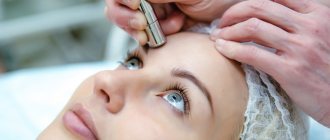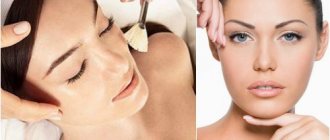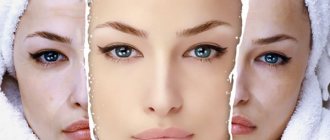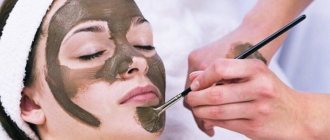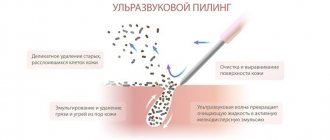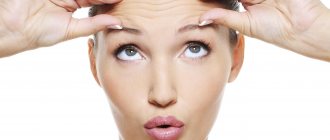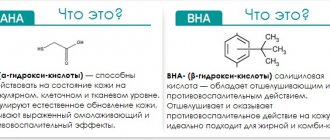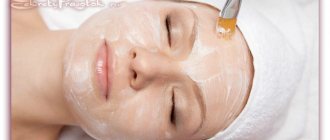Acid peeling is one of the methods that allows women to maintain their youth and attractiveness for a long time. Gone are the days when it was possible to determine their age by their appearance without much error. Today, sixty-year-old ladies often look quite fresh, and younger women, with the help of modern advances in cosmetology, do not experience aging at all. One of the most accessible and popular methods that have proven their effectiveness are various peels, including acid peels.
Acid peel boom
In recent years, there has been a boom in acid peels in cosmetology. Procedures of this nature provide high-quality skin care, allow you to tighten it, make it more youthful, remove wrinkles, get rid of scars and age spots. Glycolic peeling at home can be done no worse than in a beauty salon.
Peeling at home
Peeling is a fairly common skin cleansing procedure. You can buy a ready-made product for this or make it yourself. Although, of course, it’s easier to purchase a peeling kit in pharmacies, specialty stores and even supermarkets. When choosing, it is important to focus on the composition, expiration date and manufacturer.
What kind of acid is this?
Acid group
Glycolic or hydroxyacetic acid belongs to the fruit group, and peeling is considered chemical, although mild and gentle. In nature, acid can only be found in cane, beets and unripe grapes.
There is another name - essence of youth. It has rapid permeability through the upper skin due to its low molecular weight. In cosmetics the concentration ranges from 3 to 10%. For peeling, a concentration of 40% to 80% acid is used.
At home, cleansing with glycolic acid allows you to remove dead skin cells, dirt particles, and toxins through surface treatment of the skin.
Until recently, peeling was done only in beauty salons, but today women can take care of themselves at home using special products and instructions for use.
Action of glycolic acid
Launches internal processes in the body;- increases cell regeneration;
- promotes collagen production;
- cleanses;
- reduces sebum production;
- moisturizes;
- smoothes wrinkles;
- has protective properties against ultraviolet radiation;
- reduces pigmentation;
- relieves acne;
- tones.
As soon as the top layer of skin is destroyed, the body starts the process of producing its own collagen. Thanks to this process, the skin is renewed and looks healthy and fresh.
Effect after peeling
It comes on very quickly - within a few hours.
Who is glycolic acid peeling suitable for?
Specialists in beauty salons are confident that such acid peeling is suitable for any skin - both light with freckles and dark. The only difference will be in the concentration of the solution. But, in any case, glycolic acid has a mild effect, affecting only the surface layer of the skin.
Cases when acid peeling can be used:
- after therapy aimed at getting rid of acne, scars, spots;
- in the fight against age-related changes;
- if desired, remove age spots and freckles;
- to remove the top layer of skin;
- to increase skin elasticity;
- pronounced enlarged pores and increased sebum secretion.
In other cases, there is no point in doing an acid glycolic peel. And of course, you shouldn’t expect it to solve problems with scars and deep wrinkles, but it can make them less noticeable. For people over 50 years old, such rejuvenation and cleansing will not be effective, but up to 45 years old it can be safely practiced.
Skin testing
Before starting peeling, it is necessary to check the skin for allergies to the constituent substances. To do this, you need to apply the product to the skin around the elbow or wrist for 10 minutes.
If you feel a tingling or burning sensation, the solution is not considered allergenic. But, if the burning sensation becomes severe, the skin turns red, swelling or itching appears, then the solution is strictly forbidden to apply to the face.
When should the product not be used?
Glycolic acid has several strict contraindications. Among them:
- pregnancy;
lactation;- asthma;
- cardiac and vascular pathologies;
- diabetes;
- wounds and inflammations on the skin;
- herpes;
- warts, papillomas and other formations;
- high skin sensitivity;
- allergy to acids;
- fever;
- oncology.
It is not recommended to perform peeling if hair removal or tanning was performed a few days before the procedure.
Undesirable consequences
Side effects appear with a high concentration of acid in the solution, or with prolonged exposure to the skin. It can be:
- Swelling that appears a few hours after peeling. It goes away on its own, but requires further caution.
- Burn with redness. To smooth out the symptoms, you can simply wash your face with cold water and moisturize with a cream with a soothing effect.
- Allergy. Despite testing before the procedure of applying acid to the face, sometimes it happens that the test was successful, but an allergy appeared during peeling. Then you urgently need to take an antihistamine and further use of acid peeling is prohibited.
- Increased pigmentation.
- Dry skin, peeling. To avoid this in the future, it is recommended to dilute the acid even more and be sure to use a rich moisturizer.
Contraindications
Herpes
Cleansing procedures have obvious benefits for facial skin, if there are no contraindications to this.
- Cleansing is not carried out if there is a herpes infection on the face. In this case, the skin acts as a barrier, preventing inflammatory processes from penetrating inside. Peeling will violate this protection.
- If a woman takes pharmaceutical drugs, she should discuss this with a cosmetologist - perhaps some of them can reduce the activity of the sebaceous glands and epidermal cells. As a result, the recovery period after peeling will become quite protracted, which will provoke side effects.
- A woman who, due to her occupation, is exposed to ultraviolet radiation for a long time, should not use such procedures, since sun rays are contraindicated after peeling. Therefore, you can decide on sessions only during vacation, when you have the opportunity to stay at home for several days.
A woman may have an inadequate reaction to the acid used during peeling, which will cause irritation or swelling of the skin. Pustules, age spots may appear, or the skin may become discolored.
To protect yourself from unwanted side effects, the procedure should be done in a well-established beauty salon, where all contraindications will be taken into account and the individual characteristics of the body will be taken into account.
Tips and rules for using glycolic acid
- Firstly, before you decide to undergo an acid peel, you need to choose the right time. Favorable - autumn or winter, when solar activity is not so strong. In addition, after the procedure you will need to use creams against ultraviolet radiation for 2 weeks. In this case, pigmentation spots will not appear.
- You should not cleanse your skin with this method more than twice a month for dry skin, and once a week for oily skin. This is a prerequisite because the skin must have time to recover. It is recommended to carry out procedures 5 times every 15 days. The course can be repeated only after six months.
- It is important to prepare before peeling. You should spend a month on this stage. During this time, it is necessary to treat the skin every day before going to bed with a cosmetic product containing no more than 6% glycolic acid.
- The product is applied only to dry skin.
- You need to buy the solution only from trusted manufacturers with positive reviews.
Recipe with natural ingredients
You will need 1/4 cup white cane sugar and lemon juice. In this recipe, glycolic acid contains cane sugar, to which lemon juice is added, which contains another type of AHA, which increases the effectiveness of the procedure.
The mixture is evenly distributed over the surface of the skin using circular movements, avoiding the eye area. The duration of the procedure is 10 minutes. Rinse off the sugar with warm water and apply moisturizer. An alternative to these ingredients is to use fruit puree made from papaya and pineapple.
Types of glycolic peeling
It can be performed in two versions:
- Superficial or gentle . The acid used is 40% concentration. Recommended for whitening, fighting inflammation, and reducing fine wrinkles. Advantages include possible regular use and emergency use.
- Aggressive . The acid in this case is taken from 40% to 70%. The process of cell regeneration starts in the deepest layers of the skin. Pain, peeling, redness, and dryness often appear. The effect is much higher than with superficial, but the risk of complications is higher.
Peeling at home
If you are carrying out acid peeling for the first time, it is better to trust a qualified specialist who will advise you on how to do it yourself, but if you still decide, you need to study and take everything into account.
For home acid cleansing you will need:
- degreasing lotion;- - cotton pads;
- - glycolic acid;
- — mask with a calming effect;
- - fatty cream.
The procedure itself is simple, safe and does not take much time. It is divided into several stages:
- Cleansing . Cosmetics must be removed and the skin degreased with lotion, otherwise the acid molecules simply will not be able to penetrate the skin.
- Application . Using a cotton pad, wipe the face with the product, starting from the forehead, moving to the nose, cheeks, and chin. The main thing is not to get it on mucous membranes - eyes, lips. The procedure lasts only 5 minutes. But, if severe itching, burning, or swelling appears, you should wash the substance off your face sooner.
- Final . After the previous steps, the acid must be neutralized. This is a slightly alkaline product, without which the solution cannot be washed off. To do this, the skin is washed with cold water. In beauty salons there are specialized solutions for this, although plain water is also great for these purposes. The main thing is to restore the water-salt balance of the skin and prevent the skin from drying out. Neutralization is an important step that prevents the acid from penetrating into the deeper layers of the skin, which will lead to serious consequences. Neutralization can be done with a solution of soda or plain water.
- Calming stage with application of a moisturizing mask. The first days after peeling, it is necessary to moisturize the skin and not use cosmetics. 90% of the success of peeling consists of post-peeling restorative preparations.
Important! The product should be washed off with a cold, damp towel or napkin, otherwise the acid may get into your eyes when washing.
Recommendations
Throughout the course, sauna, bathhouse, and solarium are contraindicated due to the exposure of the skin to high temperatures, which cause negative consequences.
It is recommended to apply a soothing compress after each session, preferably one made from herbs:
- - with celandine. The recipe is simple - pour boiling water over the herb and boil for 5 minutes. After which the decoction should cool, and the herb is applied to the skin and left for 20 minutes;
- - green tea with the same processing.
Mask
To prepare the main substance, you will need a preparation with a 30% glycolic acid content. It is not recommended to choose a higher percentage, as it will only cause harm. The concentration should be increased gradually.
The first procedure should last no more than 1 minute.
For peeling, you can prepare solutions only from natural ingredients: 1 tablespoon of cane sugar , as it contains glycolic acid, freshly squeezed lemon juice for whitening, 125 ml mineral water.
The ingredients are mixed until smooth with the viscosity of the syrup. The mixture is applied to the skin carefully and left for 10 minutes. Rinse off with warm water.
This mask will not harm, so you can do it more often than an acid-based one. It is recommended to apply every 4 days, and the course is 10 procedures.
Combination with other procedures
The combination of acid peeling with moisturizing procedures is very effective. Of course, a specialist in the salon will be able to choose the right product and method of skin care without any problems. This could be mesotherapy, hardware moisturizing, which consists of introducing serum using ultrasound.
The so-called “flash of beauty” is suitable for clients who are not prone to allergies. This procedure includes peeling and mesotherapy.
Italian cosmetologists are confident that the best results can be obtained by combining peeling and ultrasound. In this case, the intercellular connections are destroyed, the stratum corneum of the skin exfoliates. It turns out that the acid starts the regeneration process, and ultrasound enhances this effect.
Preparation for the procedure
Since every acid peel causes skin burns of varying degrees, before the procedure it is necessary to prepare the skin for this aggressive effect, this will speed up the regeneration process and minimize discomfort. Before the procedure, it is advisable to use mild skin cleansers. Be sure to use a day cream with a high sun protection factor; if possible, avoid or minimize the amount of decorative cosmetics applied to the skin. All this will allow the skin to rest, accumulate maximum nutrients, easily cope with stress and recover quickly and evenly.
